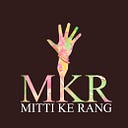Content in Indian Journalism
At this time of the pandemic, where no one is experiencing their normal routine and our lives are adjusting to the new normal, the one prominent source we rely on is the news channels to give us true and accurate information regarding what is happening around us.
But are Indian journalists doing so? Are they researching or just presenting fake news to the viewers, just to get more TRP from their competitors? Journalism in true terms is the proper comparison and distribution of legit news in print and non-print forms. This leads to three important features of journalism, that is neutrality, truth, and responsibility, and management. But is it what Indian media is doing? Clearly not.
Journalism in India is becoming atrocious day-by-day because of the fact they are choosing personal interests over journalistic ethics. Our Indian journalists used the word millennial and try to make a buzz around it. Millennials are correctly defined as anyone born between 1981 and 1996 and Indian media regards them as the youth of our country but it is unacceptable to make money on their name.
This term is misleading and has bundled up together to cover large age brackets that might sound impressive but has no relation in India’s context. When we come to the advertisement, our Indian media are captured $32.46 million by the Hindi language, $21.04 million by English, and approximately $11 million by other languages. This clearly shows the context in which the advertisement is made, i.e. targeting the main audience.
You will see a close connection with journalists, news TV owners, and political parties. Dr. Subhash Chandra is an independent member of Rajya Sabha and the Zee News’ co-owner. ZMCL(Zee Media Corporation Limited) is amongst the top 4 Hindi News channels and closely sympathetic to BJP. This shows the clear collaboration between political parties and their influence on journalism and news TV channels to decide what they want the viewers to watch. This has a direct and huge impact on the visuality and mindset of millennials as they tend to think differently about the media and journalism than it is.
The discussion on the effect of this on millennials is because today majority of the youth do not have a political ideology and directly or indirectly media does play a part in one’s political ideology. From stating ‘politics is not my cup of tea’ to saying ‘news is just entertainment’. Indian TV journalism has taken a spin at the mindsets and ideologies of Indian youth. There might be the argument that social media and other sources are what most youth popularly access one cannot ignore this based on that argument either.
Contributed by Harshita Garg Content writer at Mitti Ke Rang
At Mitti Ke Rang, we started with a COVID-19 community support fundraising, as an emergency response to provide a safety net to families. This will help them survive in the lockdown period. We aim to directly support these families by providing a minimum wage, through transferring the same into their accounts or partner with local NGO, Organisation, Fellow, or a Volunteer, and support them with groceries.
You can donate at:
Our Social Media:
LinkedIn — https://www.linkedin.com/in/mitti-ke-rang-mkr-81b230120/
Twitter: https://twitter.com/mitikerang?s=08
Instagram: https://www.instagram.com/mitti_ke_rang?r=nametag
Facebook: https://www.facebook.com/Mitikerang/
YouTube:
